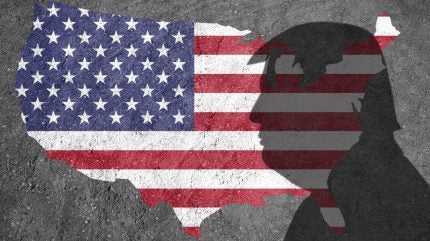
A degree of uncertainty reigns over the implementation of regulations imposed by US President Donald Trump that aim to bolster pharmaceutical manufacturing in the US, market analysis suggests.
Trump has signed a range of executive orders that aim to incentivise drugmakers to double-down on manufacturing infrastructure in the US. The most widely reported have been those pertaining to tariffs, making it harder for companies to import products into the US, among other effects.

Discover B2B Marketing That Performs
Combine business intelligence and editorial excellence to reach engaged professionals across 36 leading media platforms.
A separate executive order, the implementation of which has been less clearly explained by the administration, is one signed on 5 May that will direct the US Food and Drug Administration (FDA) to prioritise approval of domestic facilities.
Precisely, the FDA should be able to approve pharmaceutical manufacturing plants in the US faster by removing certain requirements, streamlining reviews, and providing both extra and early support. Conversely, foreign manufacturing plants will be subject to increased inspection fees.
A report by GlobalData notes that a wave of scepticism has emerged within the industry regarding the policy’s effectiveness.
Kathryn Kinch, senior pharma product manager at GlobalData, comments: “The executive order mandates the FDA to increase fees and inspections for foreign manufacturing plants, but critics are raising eyebrows over the lack of clarity surrounding its implementation.

US Tariffs are shifting - will you react or anticipate?
Don’t let policy changes catch you off guard. Stay proactive with real-time data and expert analysis.
By GlobalData“Questions linger about whether the new regulations will apply universally or be limited to specific facilities, production lines, or products. As federal agencies scramble to develop actionable guidelines, the pharmaceutical sector watches closely,” Kinch adds.
Big pharma, big investments
If Trump’s aim was to at least attract investment into the US pharmaceutical manufacturing sector, then the President can tick that box. Drugmakers have poured billions of dollars into existing and new drug facilities across the country as they adapt to the fast-changing industry dynamics.
Johnson & Johnson is set to invest $55bn over the next four years, including a $2bn biologics production site in North Carolina that promises to create 500 jobs. Roche outlaid a similar amount, planning $50bn worth of investment in the US, which will generate more than 1,000 jobs in new and expanded facilities. Novartis, Eli Lilly, and Genentech have also made US investment announcements in the wake of Trump’s reforms.
Katarina Zahedi, pharma analyst at GlobalData, comments: “These investments reflect a growing trend among pharmaceutical companies to bolster domestic operations in response to geopolitical pressures and potential tariffs on imported pharmaceuticals.”
The size of some of the investments by big pharma companies earmarked for the US has also called into question the long-term future of tariffs.
As per an equity research note sent in May, William Blair analyst Matt Phipps said: “The large manufacturing investments by the biopharma sector in the United States announced year-to-date could result in pharmaceutical-specific tariffs falling out of favour with the administration. President Trump specifically mentioned Eli Lilly would not be tariffed due to the company’s $50 billion investment in manufacturing plants in the United States.”





